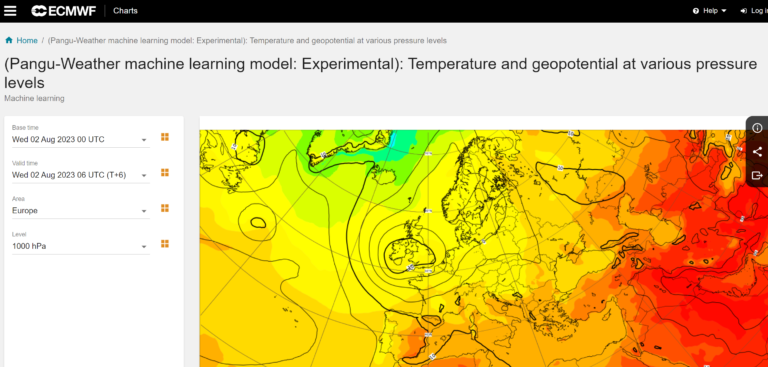Huawei Cloud has launched its new AI-powered Pangu-Weather model that enables more accurate weather forecasts to be made with a 10,000x improvement in prediction speeds, reducing global prediction times to a matter of seconds.
Pangu-Weather has been released for free on the European Centre for Medium-Range Weather Forecasts (ECMWF) website. This provides global weather forecasters, meteorologists, weather enthusiasts and the public with a platform to view Pangu Weather Model’s 10-day global weather forecasts.
In addition to making 10-day weather forecasts available, the ECMWF has also released a report comparing the forecasts made by Pangu-Weather and the ECMWF IFS (a leading global NWP system) from April to July 2023.
According to the report, the uptake of machine learning (ML) methods like Pangu-Weather could be “a game-changer for the incremental and rather slow progress of traditional NWP methods” whose forecast skill has been increasing by about one day per decade (according to the WMO). This can be attributed to the high computational cost of running a forecast with standard NWP systems.
Dr Tian Qi, chief scientist, Huawei Cloud AI field, an IEEE Fellow, and Academician of the International Eurasian Academy of Sciences, said, “Weather forecasting is one of the most important scenarios in the field of scientific computing because meteorological prediction is a very complex system, yet it is difficult to cover all aspects of mathematical and physical knowledge. At present, Pangu-Weather mainly completes the work of the forecast system, and its main ability is to predict the evolution of atmospheric states.”
Pangu-Weather model’s prediction capabilities have been tested in extreme situations such as Storm Eunice which hit northwestern Europe in February 2022 and the first time the UK hit 40°C in the summer of 2022. These two examples show that data-driven models are capable of forecasting extreme weather situations and of providing guidance for medium-range forecasting.
Pangu-Weather prediction covers geopotential, specific humidity, wind speed and temperature. All of this information is critical to predicting the development of weather systems, storm trajectories, air quality, and weather patterns. Pangu-Weather has also been used in predicting the trajectory of Typhoon Khanun, the sixth typhoon this year.
Qi said, “Our ultimate goal is to build next-generation weather forecasting framework using AI technologies to strengthen the existing forecasting systems.”
The Pangu-Weather model results have been published in the peer-reviewed scientific publication Nature.



